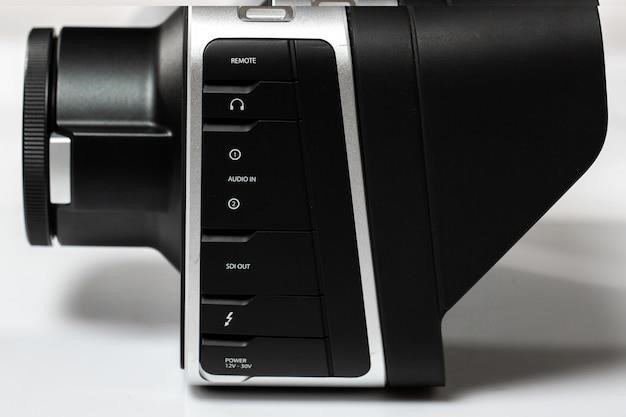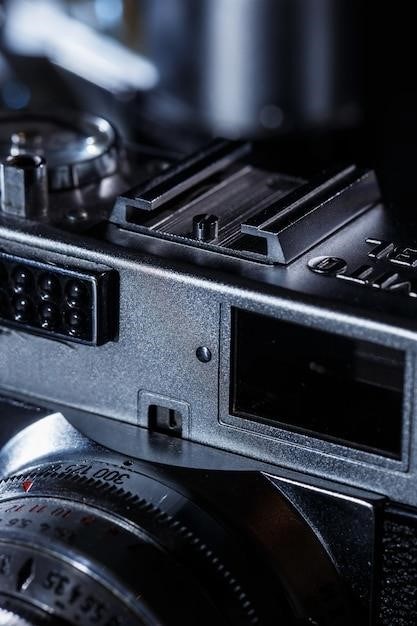Blueair Blue Pure 411 Auto⁚ A Comprehensive Guide
This guide provides a complete overview of the Blueair Blue Pure 411 Auto air purifier. Learn about its setup, operation, filter replacement, troubleshooting, and maintenance. Safety precautions and technical specifications are also included for safe and effective use. Find answers to common questions and access additional support resources.
The Blueair Blue Pure 411 Auto is a compact and efficient air purifier designed for small rooms, effectively removing airborne particles and odors. Its sleek design makes it ideal for bedrooms, offices, or other small spaces up to approximately 15 square meters (160 square feet). The unit features a unique three-speed fan setting, allowing for customized airflow adjustment to suit individual preferences and needs. The 411 Auto boasts automatic mode adjustment based on indoor PM2.5 levels, optimizing air quality based on real-time readings. This intelligent feature ensures consistent and effective purification without manual intervention. The device’s quiet operation ensures minimal disruption, even in noise-sensitive environments. It’s a user-friendly appliance with a clear and intuitive control panel, making operation and maintenance simple and straightforward. Its effectiveness in removing allergens, pollen, pet dander, dust, mold, viruses, bacteria, and some odors has earned it considerable praise. The filter replacement indicator helps users maintain optimal performance. This manual will guide you through its operation and maintenance.
Unboxing and Setup⁚ A Step-by-Step Guide
Carefully unpack your Blueair Blue Pure 411 Auto from its packaging. Inspect the unit for any signs of damage during transit. The box should contain the air purifier, a power cord, and this user manual. Ensure the power cord is correctly connected to the unit and a grounded electrical outlet. Locate a suitable placement for the air purifier, ensuring adequate ventilation around the unit and keeping it away from direct sunlight or heat sources. Avoid placing it near curtains or other flammable materials. Once positioned, plug in the power cord. The unit may require a short initialization period. The air purifier is now ready to operate. Familiarize yourself with the control panel and its functions before commencing operation. Refer to the subsequent sections of this manual for detailed operating instructions. Proper placement and initial setup are crucial for optimal performance and longevity of your Blueair Blue Pure 411 Auto. Remember to register your product online to activate your warranty. This simple process ensures you receive full coverage should any issues arise.
System Overview⁚ Understanding the Components
The Blueair Blue Pure 411 Auto air purifier boasts a sleek, compact design, ideal for smaller rooms. Its core components work in harmony to deliver clean air. The outer fabric cover acts as a pre-filter, trapping larger particles and extending the lifespan of the main filter. This washable pre-filter is easily removed for cleaning. The heart of the system is the HEPASilent™ filter, a combination of electrostatic and mechanical filtration. This advanced technology effectively removes up to 99.97% of airborne particles, including pollen, dust, pet dander, and mold spores. A carbon filter is integrated, effectively neutralizing odors from pets, cooking, and other sources. The control panel, intuitive and user-friendly, offers simple operation with various fan speed settings. An integrated air quality sensor continuously monitors the air and automatically adjusts the fan speed for optimal performance. The power cord connects to a standard electrical outlet. Understanding these components allows for proper operation and maintenance. Regular cleaning and filter replacements are crucial for maintaining optimal air purification performance.
Operating Instructions⁚ Using the Control Panel
The Blueair Blue Pure 411 Auto features a simple, intuitive control panel for ease of use. The power button turns the unit on and off. A fan speed button allows you to manually select from several settings, ranging from a quiet night mode to a higher-speed setting for more powerful air purification. The unit also includes an automatic mode. In automatic mode, the integrated air quality sensor constantly monitors particulate matter (PM2.5) levels in your room. Based on these readings, the purifier automatically adjusts the fan speed, ensuring optimal air quality without manual intervention. The filter replacement indicator light illuminates when it’s time to replace your filter. This helps maintain optimal performance and prolongs the lifespan of the unit. Refer to the filter replacement section for instructions on changing the filter. Remember to always unplug the unit before performing any maintenance. The simple controls make the Blueair Blue Pure 411 Auto accessible to users of all technical skill levels. This user-friendly design contributes to a hassle-free air purification experience. Proper operation is essential for achieving and maintaining a clean and healthy indoor environment.
Filter Replacement⁚ Maintaining Optimal Performance
Maintaining optimal performance of your Blueair Blue Pure 411 Auto requires regular filter replacement. The unit utilizes a combination filter system, typically including a pre-filter and a HEPA Silent™ main filter. The pre-filter captures larger particles like dust and pet hair, extending the life of the main filter. The HEPA Silent™ filter is highly efficient at removing smaller airborne particles, allergens, and pollutants. The filter replacement indicator light on the control panel will illuminate when it’s time to replace the filters. This usually occurs after approximately six months of continuous use, but the actual timeframe depends on usage and air quality conditions. To replace the filters, first, unplug the unit from the power source. Then, carefully remove the outer fabric pre-filter, gently washing it by hand with mild detergent and letting it air dry completely before reinstallation. Next, locate the main filter and replace it according to the instructions provided in your user manual. Always use genuine Blueair replacement filters to ensure optimal performance and maintain the warranty. Consistent filter changes are crucial for maintaining clean air and maximizing the unit’s effectiveness. Neglecting filter replacement can lead to reduced air purification capabilities and potentially damage the unit. Remember to consult your user manual for specific instructions and filter part numbers.
Troubleshooting Common Issues⁚ Addressing Potential Problems
Should you encounter issues with your Blueair Blue Pure 411 Auto, this section offers solutions to common problems. If the unit fails to power on, first check the power cord connection and ensure the outlet is functioning correctly. If the power indicator light doesn’t illuminate, inspect the power cord and try a different outlet. A malfunctioning power supply may require professional servicing. If the air quality doesn’t improve despite the purifier being on, check the filters for excessive dirt or clogging. Replace them if necessary, referring to the instructions in this manual. Ensure that the air intake and output vents are unobstructed; any blockage can reduce airflow and effectiveness. If the unit emits unusual noises, such as grinding or rattling sounds, there might be a loose component or a problem with the fan motor. In this case, it’s advisable to contact Blueair customer support or a qualified technician for assistance. If the filter replacement indicator light is persistently illuminated despite recent filter changes, verify that the filters are correctly installed. The indicator might be malfunctioning, requiring a check of the unit’s internal sensors. Refer to the user manual for further guidance or contact Blueair support for diagnostic assistance. Remember to regularly consult the user manual for detailed troubleshooting steps and contact information for further support.
Safety Precautions⁚ Ensuring Safe Operation
Prioritize safety when operating your Blueair Blue Pure 411 Auto. Always unplug the unit before cleaning or performing any maintenance. Never immerse the purifier in water or any other liquid; this can cause electrical shock and damage the internal components. Keep the power cord away from heat sources and sharp objects to prevent damage or fire hazards. Ensure adequate ventilation around the unit; do not obstruct the air intake or outlet vents. This prevents overheating and maintains optimal performance. Never insert fingers or any objects into the air intake or output vents during operation; The rotating fan blades pose a significant risk of injury. Supervise children closely near the purifier and prevent them from tampering with it. Ensure the unit is placed on a stable, level surface to avoid tipping. Do not use the purifier in damp or wet environments, and avoid placing it near water sources; If the power cord is damaged, discontinue use immediately and contact Blueair customer support or a qualified technician for repair or replacement. Always follow the instructions in this manual for proper use and maintenance to ensure safe and reliable operation of your air purifier. Regularly inspect the power cord for any signs of wear or damage. Replace any damaged parts promptly to prevent potential hazards.
Technical Specifications⁚ Dimensions and Capabilities
The Blueair Blue Pure 411 Auto boasts compact dimensions, making it ideal for smaller rooms. Its footprint measures 200mm in width and depth, with a height of 425mm. This space-saving design allows for convenient placement on desks, nightstands, or shelves without compromising functionality. The purifier’s lightweight construction facilitates easy portability, allowing you to move it between rooms as needed. Despite its compact size, the 411 Auto offers impressive air purification capabilities. It effectively cleans rooms up to 15 square meters, ensuring a healthier breathing environment. The unit features multiple fan speed settings, allowing users to adjust the airflow to their preferences, ranging from a quiet night mode to a higher speed for more rapid air purification. The auto mode automatically adjusts fan speed based on detected air quality levels. The filter system employs a combination of a pre-filter and a HEPASilent filter for efficient removal of pollutants and allergens. The filter replacement indicator light notifies the user when a filter change is necessary, simplifying maintenance. These specifications are crucial for understanding the 411 Auto’s performance and suitability for your specific needs. Refer to the included user manual for more detailed information on filter types and replacement procedures.
Air Quality Monitoring⁚ Understanding the Indicators
The Blueair Blue Pure 411 Auto incorporates intelligent air quality monitoring capabilities, providing users with real-time feedback on their indoor air environment. This feature is crucial for understanding the purifier’s effectiveness and making informed decisions about air quality management. The unit’s indicator lights provide a visual representation of the air quality. A green light signifies excellent air quality, indicating that the air is clean and free of significant pollutants. A yellow light indicates moderate air quality, suggesting the presence of some pollutants, while a red light signals poor air quality, indicating a higher concentration of pollutants requiring immediate attention. The color-coded system allows users to quickly assess the air quality without complex readings or technical knowledge. The automatic mode automatically adjusts the fan speed based on the detected air quality, ensuring optimal performance. Users can monitor the air quality indicators to gauge the purifier’s effectiveness in different settings and adjust usage accordingly. Understanding these indicators is essential for maximizing the benefits of the Blueair Blue Pure 411 Auto and ensuring a consistently clean and healthy indoor environment. Regular monitoring allows for proactive adjustment of purifier settings and ensures optimal air purification. The user manual offers a detailed explanation of the indicator lights, their significance, and how best to interpret them for informed action.
Cleaning and Maintenance⁚ Keeping Your Purifier Clean
Regular cleaning and maintenance of your Blueair Blue Pure 411 Auto are crucial for optimal performance and longevity. The pre-filter, a washable fabric component, should be cleaned regularly, ideally every two weeks or as needed, depending on usage and environmental conditions. To clean the pre-filter, simply remove it from the unit, gently hand-wash it with lukewarm water and mild detergent, and allow it to air dry completely before re-installing. Avoid using harsh chemicals or abrasive cleaners, as these can damage the filter material. The main filter, a HEPA Silent™ filter, needs replacing approximately every six months, depending on usage and air quality. Refer to the user manual for detailed instructions on filter replacement. The outer casing of the purifier can be wiped clean with a slightly damp cloth. Avoid getting water inside the unit, and always ensure the unit is unplugged before cleaning. Regular cleaning of the air quality sensors, located on the back of the unit, is also essential to maintain accurate readings. Use a soft brush or compressed air to gently remove any accumulated dust or debris. By adhering to these simple cleaning and maintenance guidelines, you can ensure that your Blueair Blue Pure 411 Auto maintains its peak performance and continues to deliver clean, healthy air to your home for years to come. Proper care will extend the life of your purifier and maximize its investment.
Warranty Information⁚ Protecting Your Investment
Your Blueair Blue Pure 411 Auto air purifier is protected by a limited warranty, the details of which can be found in the accompanying documentation or on the Blueair website. This warranty typically covers manufacturing defects in materials and workmanship for a specified period, often one or two years from the date of purchase. To validate your warranty, you may need to register your product online within a certain timeframe after purchase; details on this process are usually included in the user manual or on the product registration page of the Blueair website. The warranty does not cover damage caused by misuse, neglect, accidents, or unauthorized repairs. Normal wear and tear, such as filter replacement, is also not covered under warranty. Keep your proof of purchase, such as your receipt or online order confirmation, as it will be required to make a warranty claim. Should you encounter any issues with your unit during the warranty period, contact Blueair customer support. They will guide you through the claims process and assist in resolving any problems. Understanding the terms and conditions of your warranty ensures that you are fully protected and can confidently rely on the quality of your Blueair Blue Pure 411 Auto for years to come. For comprehensive details, please refer to the complete warranty document.
Where to Find Additional Support⁚ Accessing Resources
Beyond this user manual, Blueair offers multiple avenues for support to ensure you get the most from your Blue Pure 411 Auto. Their comprehensive website is a valuable resource, providing FAQs, troubleshooting tips, and access to downloadable resources like updated manuals and software. The website’s customer support section often includes video tutorials demonstrating proper operation and maintenance. If you can’t find the answer to your question online, Blueair typically offers phone and email support. Contact details, including hours of operation, are usually found on their website’s contact page. For a quicker resolution to simple issues, utilizing the online FAQ section is often the most efficient approach. This often contains answers to common questions about setup, filter replacement, and minor troubleshooting. Consider checking online forums and communities dedicated to Blueair products. These platforms often feature user discussions, tips, and solutions to problems shared among other owners. Remember to always refer to the official Blueair website and resources for accurate and up-to-date information. Avoid relying solely on unofficial sources for technical guidance. By utilizing these combined resources, you can confidently address any questions or concerns regarding your Blue Pure 411 Auto air purifier.







